
A storyboard is a graphic organizer that consists of illustrations or images displayed in sequence for the purpose of pre-visualizing a motion picture, animation, motion graphic or interactive media sequence. The storyboarding process, in the form it is known today, was developed at Walt Disney Productions during the early 1930s, after several years of similar processes being in use at Walt Disney and other animation studios.
A screenplay, or script, is a written work produced for a film, television show, or video game by screenwriters. A screenplay written for television is also known as a teleplay. Screenplays can be original works or adaptations from existing pieces of writing. A screenplay is a form of narration in which the movements, actions, expressions and dialogue of the characters are described in a certain format. Visual or cinematographic cues may be given, as well as scene descriptions and scene changes.

The Wilhelm scream is a stock sound effect that has been used in many films and TV series, beginning in 1951 with the film Distant Drums. The scream is usually used when someone is shot, falls from a great height, or is thrown from an explosion. The sound is named after Private Wilhelm, a character in The Charge at Feather River, a 1953 Western in which the character gets shot in the thigh with an arrow. This was its first use following its inclusion in the Warner Bros. stock sound library, although The Charge at Feather River was the third film to use the effect. The scream is believed to be voiced by actor Sheb Wooley. It was featured in all of the original Star Wars films.

Shelby Fredrick "Sheb" Wooley was an American singer, songwriter, and actor. He recorded a series of novelty songs including the 1958 hit rock and roll comedy single "The Purple People Eater" and under the name Ben Colder the country hit "Almost Persuaded No. 2". As an actor, he portrayed Cletus Summers, the principal of Hickory High School and assistant coach in the 1986 film Hoosiers; Ben Miller, brother of Frank Miller in the film High Noon; Travis Cobb in The Outlaw Josey Wales, and scout Pete Nolan in the television series Rawhide. Wooley is also credited as the voice actor who provided the Wilhelm scream and all of the other stock sound effects for Thomas J. Valentino's Major record label during the 1940s.
Filmmaking or film production is the process by which a motion picture is produced. Filmmaking involves a number of complex and discrete stages, beginning with an initial story, idea, or commission. Production then continues through screenwriting, casting, pre-production, shooting, sound recording, post-production, and screening the finished product before an audience, which may result in a film release and exhibition. The process is nonlinear, as the director typically shoots the script out of sequence, repeats shots as needed, and puts them together through editing later. Filmmaking occurs in a variety of economic, social, and political contexts around the world, and uses a variety of technologies and cinematic techniques to make theatrical films, episodic films for television and streaming platforms, music videos, and promotional and educational films.
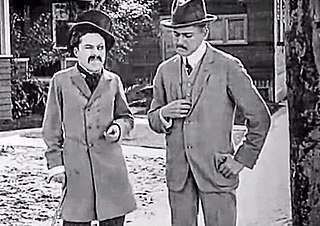
Making a Living is the first film starring Charlie Chaplin. A one-reel comedy short, it was completed in three days at Keystone Studios in Los Angeles, California and was released for distribution on February 2, 1914. In it Chaplin portrays a charming swindler who runs afoul of a news reporter and a Keystone Cop. In addition to co-writing the "scenario" and directing the production, Henry Lehrman performs as the principal supporting character.
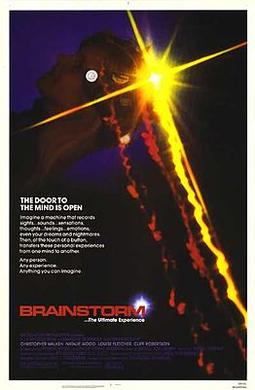
Brainstorm is a 1983 American science fiction film directed by Douglas Trumbull, and starring Christopher Walken, Natalie Wood, Louise Fletcher, and Cliff Robertson.
The Claws of Axos is the third serial of the eighth season of the British science fiction television series Doctor Who, which was first broadcast in four weekly parts on BBC1 from 13 March to 3 April 1971.
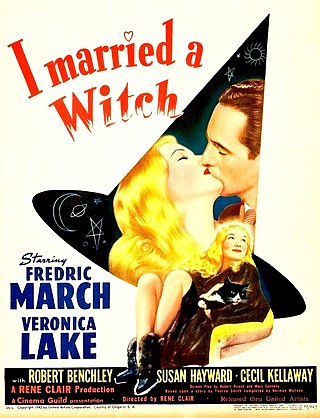
I Married a Witch is a 1942 American romantic comedy fantasy film, directed by René Clair, and starring Veronica Lake as a witch whose plan for revenge goes comically awry, with Fredric March as her foil. The film also features Robert Benchley, Susan Hayward and Cecil Kellaway. The screenplay by Robert Pirosh and Marc Connelly and uncredited other writers, including Dalton Trumbo, is based on the 1941 novel The Passionate Witch by Thorne Smith, who died before he could finish it; it was completed by Norman H. Matson.
Homicide was a landmark Australian television police procedural drama series broadcast on the Seven Network and produced by Crawford Productions. It was the television successor to Crawfords' radio series D24. The "Consummate Homicide cast" includes the four characters that are the best known: Det. Snr. Sgt. David "Mac" MacKay, Det. Sgt. Peter Barnes, Inspector Colin Fox and Sen. Det. Jim Patterson.

Paul Steven Ripley was an American recording artist, record producer, songwriter, studio engineer, guitarist, and inventor. He entered the music industry in 1977. He was also the leader/producer of country rock band The Tractors.
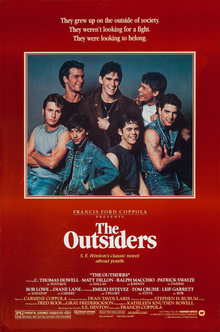
The Outsiders is a 1983 American coming-of-age crime drama film directed by Francis Ford Coppola. The film is an adaptation of the 1967 novel of the same name by S. E. Hinton and was released on March 25, 1983, in the United States. Jo Ellen Misakian, a librarian at Lone Star Elementary School in Fresno, California, and her students were responsible for inspiring Coppola to make the film.
Red dirt is a genre of country music that gets its name from the color of soil found in Oklahoma. Many red dirt acts got their start in bars surrounding Oklahoma State University in Stillwater, a city considered to be the center of red dirt music. The genre also extends to music made south of the Red River in Texas. Outlaw country legends Waylon Jennings and Willie Nelson have been associated with the distinctive Texas sound, while the late Oklahoma singer-songwriter Bob Childers is widely recognized as the Father of Oklahoma red dirt music. At one time, the distinction between the two genres was sonically obvious, but by 2008, that gap had diminished.
Camera coverage, or coverage, is the amount and kind of footage shot used to capture a scene in filmmaking and video production. The film editor uses coverage in post-production to assemble the final cut.
John Steven Wooley is an American writer, novelist, historian, lecturer, filmmaker, and radio and TV host who specializes in the movies, literature, and music of the 1930s and ‘40s as well as other pop-culture histories.
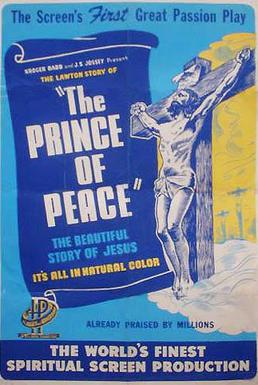
The Lawton Story of "The Prince of Peace", originally released as The Lawton Story and later reissued as The Prince of Peace, is a religious-themed film that later made the roadshow rounds presented by exploitation pioneer Kroger Babb. Filmed in Cinecolor in 1948, it is based on an annual passion play in Lawton, Oklahoma, "The Prince of Peace," created in 1926 by Rev. A. Mark Wallock. This Easter pageant became immensely popular among locals, attracting as many as 250,000 people.

The Tulsa metropolitan area, officially defined as the Tulsa metropolitan statistical area is a metropolis in northeastern Oklahoma centered around the city of Tulsa and encompassing Tulsa, Rogers, Wagoner, Osage, Creek, Okmulgee and Pawnee counties. It had a population of 1,034,123 according to the 2022 U.S. census estimates.

The Immortal Alamo is an American silent film released on May 25, 1911. The Immortal Alamo is the earliest film version of the events surrounding the 1836 Battle of the Alamo. The film was directed by William F. Haddock and produced by Gaston Méliès. The film's cast included Francis Ford, Edith Storey, William A. Carroll, and one hundred cadets from the Peacock Military Academy. The film was said to be 10 minutes in length and focused on the formula of "pretty girl, shy hero, and a villain" during the battle.
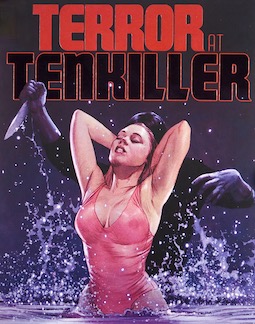
Terror at Tenkiller is a 1986 American slasher film directed and produced by Ken Meyer, and starring Stacey Logan, Michelle Merchant, Michael Shamus Wiles, and Kevin Meyer. Its plot follows two female college students spending their summer vacation at Lake Tenkiller in rural Oklahoma where a rash of grisly murders are occurring.
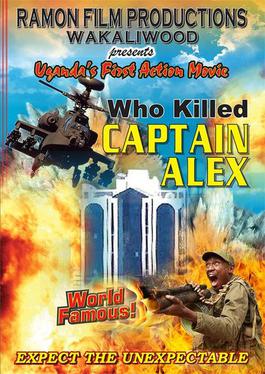
Who Killed Captain Alex? is a 2010 Ugandan action comedy film written, produced, and directed by Nabwana Isaac Geoffrey Godfrey (IGG), by Wakaliwood, an ultra low-budget studio in Kampala, Uganda. The film gained viral notoriety for being a no-budget action film, produced on a reported budget of under $200 although producer Alan Hofmanis later stated that the production value was in fact $85. A trailer for the film was uploaded to YouTube in January 2010 and the full film was uploaded in March 2015, and has been viewed over 9.2 million times as of 9 March 2024. The original version of the film was lost due to power outages and "strained conditions" according to Nabwana, while the surviving version of Who Killed Captain Alex? released online includes commentary from the first English-speaking "Video Joker" that includes running gags about the characters.














